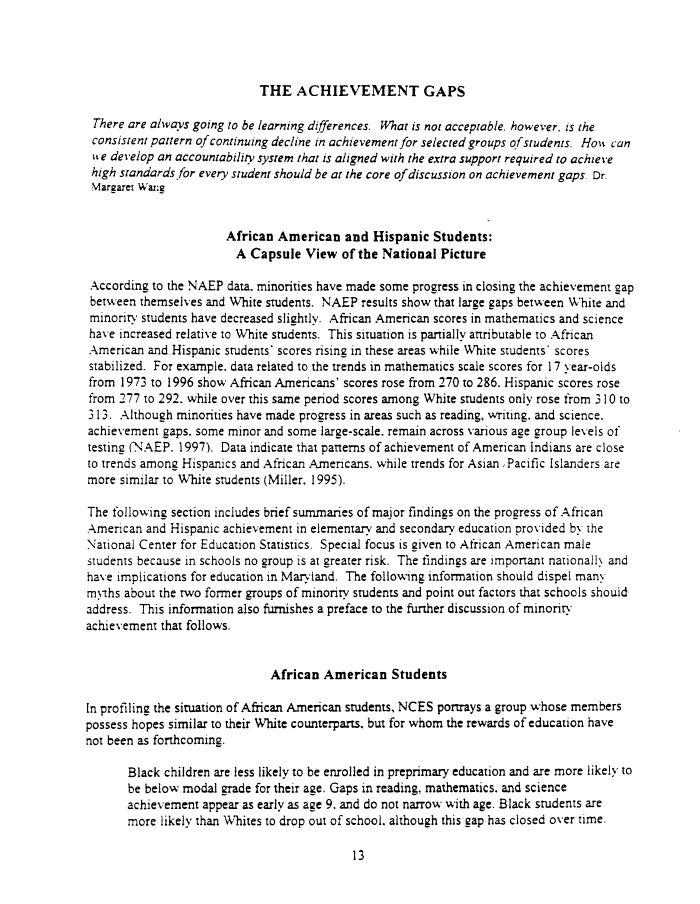 |
||||
|
TASK FORCE TO STUDY THE HISTORY AND LEGACY OF SLAVERY IN MARYLAND (Final Report) 1999/12/31 MdHR 991422 MdHR 991422, Image No: 192 Print image (77K) |
 |
||||
|
TASK FORCE TO STUDY THE HISTORY AND LEGACY OF SLAVERY IN MARYLAND (Final Report) 1999/12/31 MdHR 991422 MdHR 991422, Image No: 192 Print image (77K) |
| THE ACHIEVEMENT GAPS There are always going to be learning differences. What is not acceptable, however, is the cons is lent pattern of continuing decline in achievement for selected groups of students. Ho\\ can u e develop an accountability system that is aligned with the extra support required to achieve high standards for every student should be at the core of discussion on achievement gaps. Dr. Marcaret War:e African American and Hispanic Students: A Capsule View of the National Picture According to the NAEP data, minorities have made some progress in closing the achievement gap between themselves and White students. NAEP results show that large gaps between White and minoriry students have decreased slightly. African American scores in mathematics and science have increased relative to White students. This situation is partially attributable to African American and.Hispanic students' scores rising in these areas while White students' scores stabilized. For example, data related to the trends in mathematics scale scores for 17 year-olds from 1973 to 1996 show African Americans' scores rose from 270 to 286. Hispanic scores rose from 277 to 292. while over this same period scores among White students only rose from 310 to 313. Although minorities have made progress in areas such as reading, writing, and science, achievement gaps, some minor and some large-scale, remain across various age group levels of testing (NAEP. 1997). Data indicate that patterns of achievement of American Indians are close to trends among Hispanics and African Americans, while trends for Asian /Pacific Islanders are more similar to White students (Miller. 1995). The following section includes brief summaries of major findings on the progress of African American and Hispanic achievement in elementary and secondary education provided by ihe National Center for Education Statistics. Special focus is given to African American male students because in schools no group is at greater risk. The findings are important nationally and have implications for education in Maryland. The following information should dispel many myths about the two former groups of minoriry students and point out factors that schools should address. This information also furnishes a preface to the further discussion of minority achievement that follows. African American Students In profiling the situation of African American students, NCES portrays a group whose members possess hopes similar to their White counterparts, but for whom the rewards of education have not been as forthcoming. Black children are less likely to be enrolled in preprimary education and are more likely to be below modal grade for their age. Gaps in reading, mathematics, and science achievement appear as early as age 9. and do not narrow with age. Black students are more likely than Whites to drop out of school, although this gap has closed over lime. 13 |